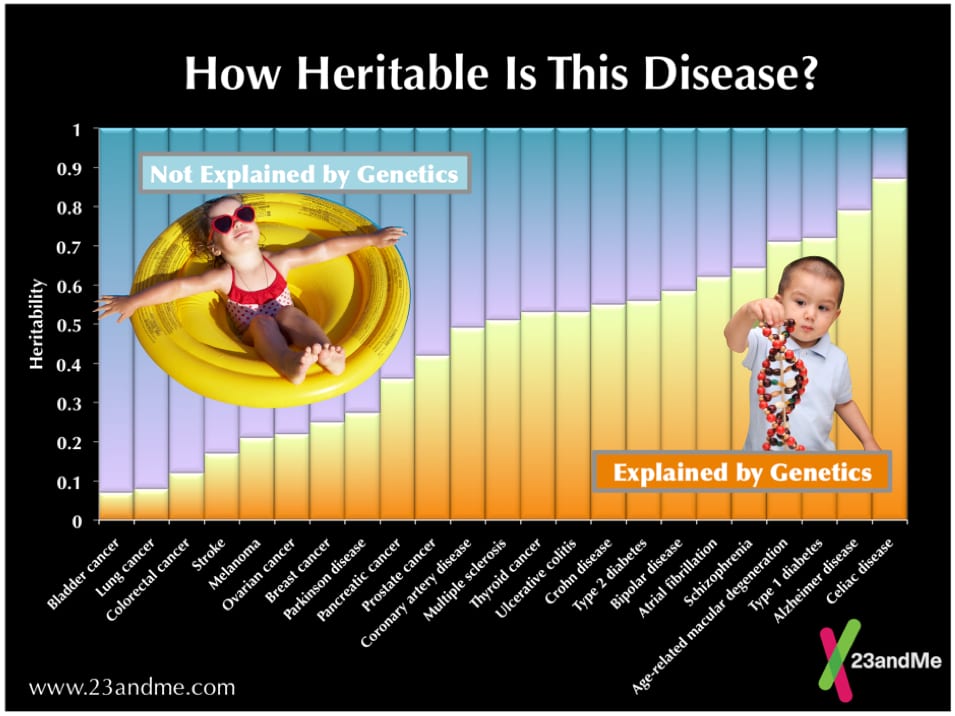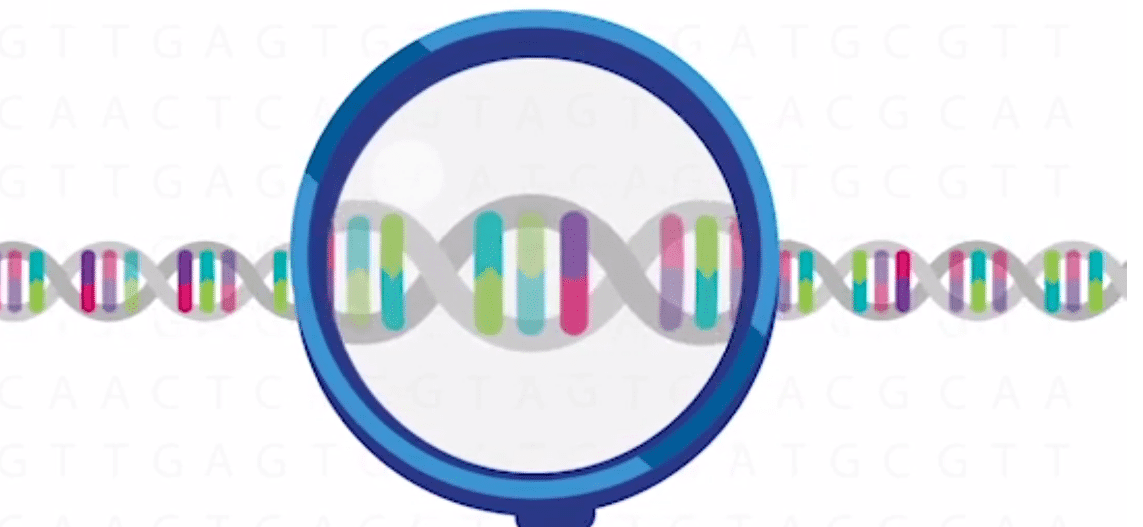Last week we quizzed our readers on heritability, a genetics concept that is often misinterpreted. Congratulations to Monica P., the winner of the quiz! She got all the answers correct and will receive an Amazon gift card. Read on for the answers and to learn more about what we can say about nature vs. nurture…
by Emily Chang and Chuong Do

This image shows the heritabilty of several diseases; the font size is proportional to the heritability of the disease. Celiac disease, for instance, is highly heritable, whereas lung cancer is much less heritable. Click on the chart to see a larger version. (Source: Chuong Do, unpublished manuscript)
What can you blame for those extra pounds, your great grandma Bertha’s obesity or that extra bowl of ice cream? “Nature” and “nurture” are commonly pitted against each other in discussions on genetics, but for most disease, both play a contributing role. In any population, individuals vary in their propensity for developing a given disease. The proportion of this variation in the population that can be explained by genetics is known as “heritability.”
A: Bladder cancer. The heritability of bladder cancer is approximately 7%, suggesting that environmental factors contribute much more to variations in risk for this disease than genetics.
Heritability estimates vary considerably across common diseases. For instance, celiac disease is highly heritable, meaning that the variability in the disease is mostly due to genetic differences. Other diseases are less heritable, such as lung cancer; the variability in this disease may be more correlated with non-genetic risk factors (e.g., smoking habits, diet, air pollution, etc.) than with genetic differences.
A: False. Heritability describes the extent to which genetics explains variations in risk across a population, but does not explain the genetic contribution towards risk for an individual, for whom specific genetic or non-genetic factors may play a bigger role.
Heritability is a complex concept, and not surprisingly, is often misinterpreted. The most common misconception is that heritability describes the relative importance of genetics and environment for a specific individual. While useful at the population level, heritability actually doesn’t mean much at the individual level. For example, IQ is a highly heritable, but one can’t assume that a child born to parents of high IQ will also have a high IQ without factoring in the extremely important role played by his or her upbringing. As another example, breast cancer is estimated to have relatively low heritability (less than 33%), yet for a woman carrying a rare mutation in the BRCA1 or BRCA2 genes, knowledge of this single genetic factor will often have a substantially greater significance for her breast cancer risk than any known environmental factor.
A: False. Genetic factors may play a relatively small role in ovarian cancer risk for the general population, but there may still be rare genetic factors that contribute greatly to a woman’s risk for the disease.
Another misconception is the idea that a disease that is highly heritable must be determined by only a few genes that have a strong effect. Some diseases, such as cystic fibrosis, can be attributed solely to mutations in a single gene; this, however, is not always the case. The high heritability of schizophrenia, for example, is often believed to result from the contributions of many, many genes, each with small impact on disease risk. A person could harbor lots of risk-predisposing variants for schizophrenia, yet still not have the disease.
A: True. Heritability can differ depending on which population you’re looking at, and can change over time as the environment changes.
Finally, many people assume that heritability for a given condition is constant across populations and over time. In reality, heritability can be highly population dependent, and can change as the environment changes. For instance, height depends on both nutrition and genetics. In societies where nearly all children receive comparable nutrition, only genetic factors vary between individuals, so height appears highly heritable. But in societies with greater economic disparities, height differences correlate more strongly with nutrition, resulting in lower heritability.
Although often misunderstood, heritability is a useful concept that can provide insights into the nature vs. debate. More importantly, the low heritability of many diseases suggests that our collective disease destiny is only partially determined by our genes. You can’t change your DNA, but you can change your ice cream to frozen yogurt.

Heritability estimates from the scientific literature are typically based on twin studies and vary widely across diseases, as illustrated in the chart above. Click on the chart to see a larger version.
(Source: Chuong Do, unpublished manuscript).


